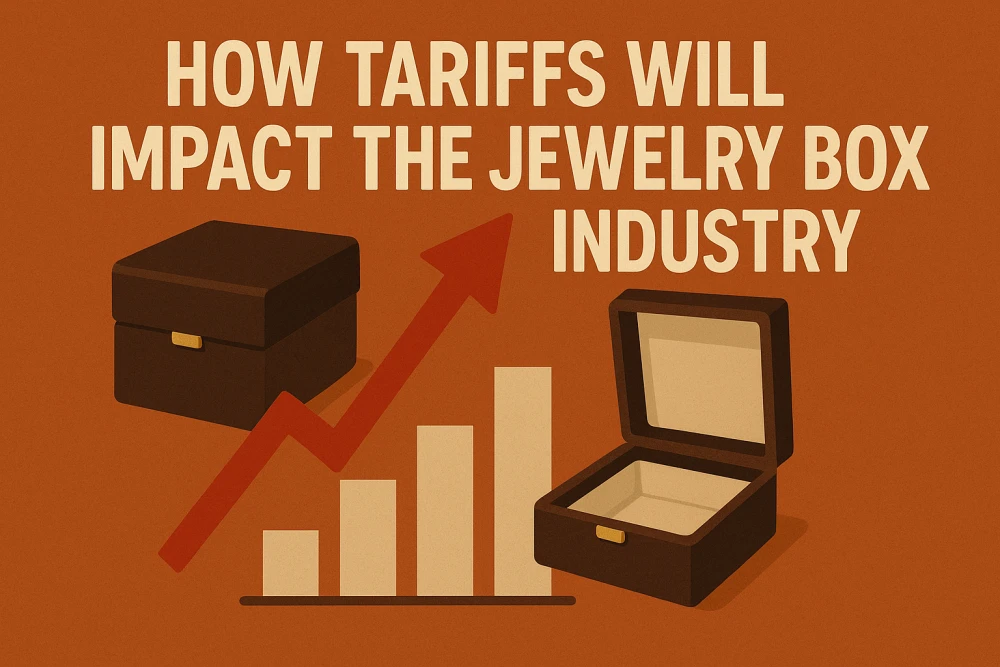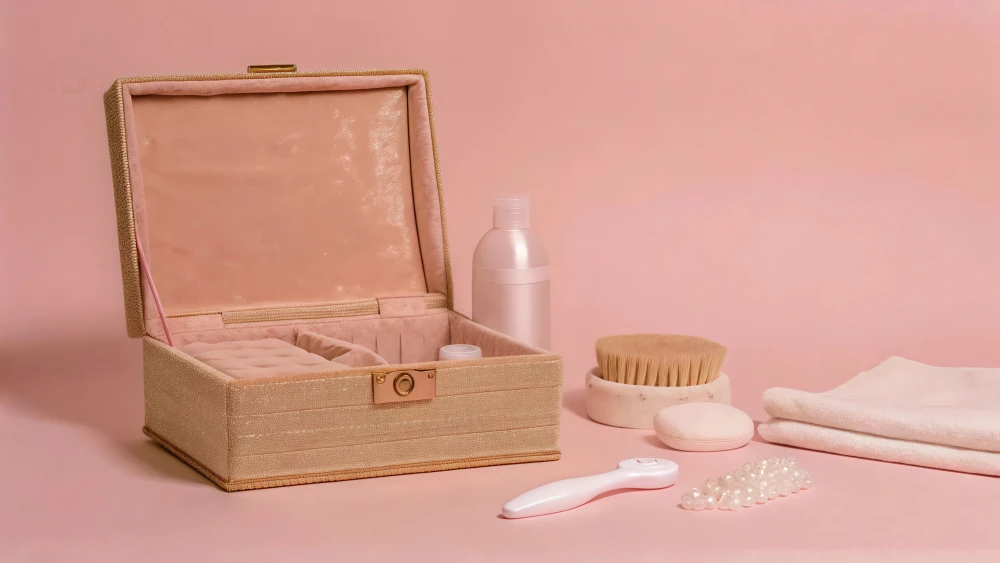How Tariffs Will Impact The Jewelry Box Industry 2025
As we step into 2025, the global trade environment continues to shift, bringing new challenges and opportunities for the jewelry box industry. One of the biggest concerns this year is the impact of tariffs — especially those involving Chinese imports — on the cost, production, and distribution of jewelry boxes, particularly in the United States.
Whether you’re a retailer, manufacturer, wholesaler, or consumer, understanding how increased costs, imported duties, and reciprocal tariffs affect the supply chain can help you stay prepared. Here’s a clear and concise breakdown of what to expect and how the industry is responding.

The Rising Cost of Jewelry Boxes
The most immediate and visible impact of tariffs is increased cost — both for manufacturers and for end consumers. Many jewelry box manufacturers source materials or fully finished jewelry boxes from China due to cost efficiency and production capacity. However, with the U.S. government imposing new tariffs — including the proposed 104 tariff — on a wide range of Chinese imports, prices are climbing quickly.
Higher tariff rates mean that a jewelry box that once cost $5 to import might now cost $7 or more. These extra costs are often passed down the supply chain, ultimately impacting American consumers, who may see higher prices for both luxury and standard jewelry boxes.
Impact on the Diamond and Jewelry Box Sector
The diamond and jewelry box segment is particularly affected due to the combination of material costs, custom designs, and packaging requirements. For high-end products, presentation is crucial. If tariffs make it more expensive to import elegant or customized boxes, brands may be forced to reduce quality or raise their product prices — both of which can hurt sales.
In addition, with growing environmental awareness, there’s an increasing demand for eco-friendly produce packaging and sustainable box options. However, many produce packaging manufacturers and packaging wholesalers that offer these solutions still rely on components or raw materials from China. The new tariffs will likely make these greener options even more expensive.

The Shift in Global Trade Routes
In response to the growing list of existing tariffs, companies are adjusting their global sourcing strategies. Many are actively looking for alternative suppliers outside of China to avoid high import duties. Countries in Southeast Asia, such as Vietnam and India, are becoming popular choices for sourcing packaging materials and industrial jewelry boxes.
Organizations such as the Export Promotion Council GJEPC (Gem & Jewellery Export Promotion Council) and the Jewellery Box Export Promotion Council are helping promote new sourcing and gem jewellery box export promotion. They aim to reduce over-dependence on Chinese imports and encourage exports from tariff-free or low-duty regions.
Reciprocal Tariffs and Global Competition
Tariffs are not one-sided. As the U.S. increases import duties on Chinese goods, China and other countries are implementing reciprocal tariffs, affecting U.S. exports. For American packaging companies trying to sell globally, this means they could face higher barriers when exporting to key markets.
This two-way tariff war affects both jewelry box manufacturers and the broader packaging sectors. It also places more pressure on wholesale boxes and packaging businesses that depend on competitive pricing and international trade.
The Role of Local Sourcing and Innovation
One positive outcome of these trade tensions is a renewed interest in local sourcing. Manufacturers in the U.S. and other regions are investing in the domestic production of jewelry boxes, looking to reduce their reliance on foreign suppliers. While local manufacturing can be more expensive upfront, it avoids the unpredictability of global tariffs and allows for more control over quality and delivery times.
Additionally, there’s a surge in innovation — particularly around sustainable packaging. As eco-friendly produce packaging becomes a stronger selling point, brands are exploring new materials and manufacturing techniques. This shift not only meets consumer demand but also helps companies qualify for duty-free or reduced-duty treatment under new trade agreements.

Packaging Wholesalers Under Pressure
Packaging wholesalers — especially those who deal in wholesale boxes and packaging — are stuck in the middle. On the one hand, they face higher import costs due to tariffs. On the other hand, their clients expect competitive pricing and high-quality goods.
To survive in 2025, many wholesalers are diversifying their sourcing channels, building new partnerships, and investing in flexible inventory systems. Some are even turning to produce packaging manufacturers that offer multipurpose solutions adaptable for jewelry box manufacturing and other sectors.
Looking Ahead: Strategy Over Survival
The jewelry box industry in 2025 is no longer just about packaging — it’s about strategy. Trade relationships between China and the United States remain complex and unstable. The possibility of new tariffs or policy shifts is always looming. Whether it’s dealing with the tariff on Chinese goods or navigating reciprocal tariffs, companies must stay agile.
Here are a few key takeaways for industry stakeholders:
- Manufacturers should evaluate alternative sourcing options and invest in local production where possible.
- Retailers need to prepare for higher prices and manage consumer expectations.
- Wholesalers must build resilient supply chains and maintain strong communication with clients.
- Exporters should engage with councils like GJEPC to take advantage of promotion programs and tariff-free markets.
Conclusion
Tariffs are changing the way the jewelry box industry operates. While they present new challenges, they also open the door for creativity, sustainability, and regional growth. Whether you’re packaging diamonds, creating luxury boxes, or producing industrial jewelry boxes, the key to success in 2025 lies in adaptation.
Understanding how tariffs affect each stage of the supply chain — from jewellery box export promotion council programs to sourcing from eco-friendly produce packaging suppliers — will help businesses stay competitive in a changing global landscape.
Contact our packaging experts today to explore sustainable, cost-effective solutions tailored to your business. Let’s work together to turn these global challenges into new opportunities.
